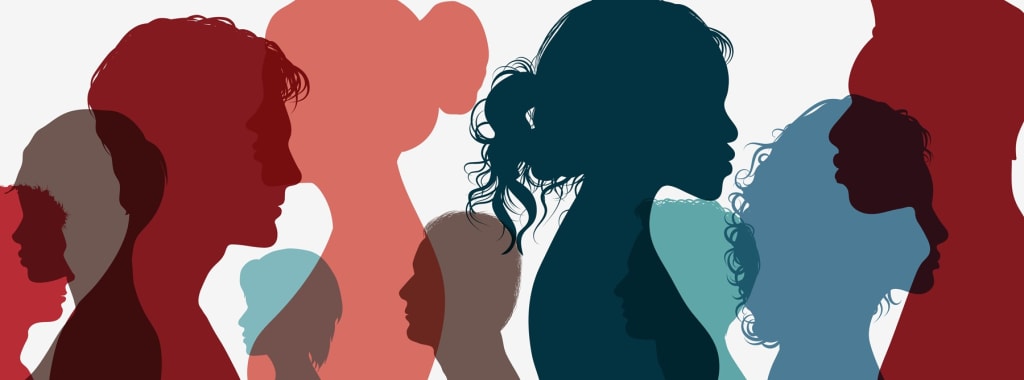Gender Equality
Striving for equality throughout the world

Gender equality is one of the trending social issues nowadays. It refers to the concept of equality of treatment, rights and opportunities for everyone regardless of their genders in every walk of life which includes employment, education, cultural, political and social activities. The aim of gender equality is to eradicate the biases and discrimination and alleviate the justice for all individuals.
Attaining gender equality is ongoing complex process that involves the change in behavior, laws, policies and attitude of the community. It requires dismantling the stereotypes and social norms that nourishes inequality and gender based discrimination. Eradication of gender discrimination is the advocate of women rights, and address the ongoing challenges faced by unprivileged gender like women of color, disabled people and LGBTQ+.
In the recent decade’s significant efforts has been done to promote gender equality, but still a lot has to be done in this respect. Gender inequality dominates various areas of society like pay, political representation, employment opportunities, access to health care and education. Government, communities, and individuals should work to ensure people live free of discrimination, and bias with utmost respect and dignity.
Gender stereotypes are intricate in cultural beliefs that reflect behaviors, traits, and specific roles of individuals according to their genders. These stereotypes are limiting and perpetuate discrimination and inequality. Breaking these stereotypes can help in the creation of a just society nourishing all gender types. We can break these stereotypes by encouraging the individuals to pursue and explore interests and the career traditionally associated with opposite gender. We can eradicate gender discrimination by:
Educate yourself and others: Acquire information of the negative effects of gender stereotypes and pass it on to others. When you see or hear stereotypes, challenge them.
Celebrate diversity: Accept and honor the range of gender expressions and identities. Regardless of gender, respect and validate the identities of all people.
Encourage open dialogue: Encourage open dialogue regarding gender and how it affects people's lives. Create a welcoming environment where people may express their experiences and viewpoints.
Work to advance equality: Advocate for gender parity in all spheres of society, including politics, business, and education.
Support inclusive policies: Push for laws that support inclusion and gender equality, such as parental leave laws and equal pay laws.
Set a good example: Set a good example for others to follow. In your own life, challenge gender preconceptions, and inspire others to do the same.
We can build a more equal and welcoming society that recognizes the diversity and individuality of all people, regardless of gender, by dismantling gender stereotypes.
Regardless of gender, everyone should have access to education since it is a fundamental human right. Unfortunately, access to education is still unevenly distributed over the world, especially for women and girls.
Governments and other stakeholders must take proactive measures to overcome the hurdles that impede girls and women from attending school in order to guarantee that both genders have equal access to education. Poverty, cultural norms and preconceptions, a lack of infrastructure, and bad legislation can all be obstacles.
Effective measures that can improve all genders' access to education include:
Providing financial assistance: Many families, especially those with several children, are unable to afford the cost of school. By offering financial support, such as scholarships, we can lessen this burden and make sure that both boys and girls have the chance to go to school.
Building schools and enhancing infrastructure: In some places, it may be difficult for pupils to attend school due to a shortage of schools or insufficient infrastructure, such as a lack of clean water or sanitary facilities. A better learning environment can be produced by constructing new schools and enhancing old ones.
Taking on cultural norms and stereotypes: In some societies, there may be beliefs that limit the opportunities for girls or discourage girls from going to school. A more inclusive learning environment can be achieved by making an effort to confront these biases and highlight the importance of education for all genders.
Creating gender-sensitive policies can help guarantee that girls and women have equal access to education by taking into account their specific requirements. For instance, policies that address gender-based violence or offer menstrual hygiene management facilities can assist establish a safer and more encouraging learning environment for females.
Providing teacher training: Teachers play a critical role in creating a positive learning environment and promoting gender equality. Providing training for teachers on gender-sensitive teaching methods and classroom management can help ensure that all genders feel welcome and supported in the classroom.
In conclusion, ensuring access to education for all genders requires a comprehensive approach that addresses the various barriers that prevent girls and women from attending school. By taking proactive steps to promote gender equality and create inclusive learning environments, we can help ensure that all genders have the opportunity to reach their full potential through education.
About the Creator
senya abdulrehman
"Creating magic with words, one page at a time"
Enjoyed the story? Support the Creator.
Subscribe for free to receive all their stories in your feed. You could also pledge your support or give them a one-off tip, letting them know you appreciate their work.






Comments
There are no comments for this story
Be the first to respond and start the conversation.